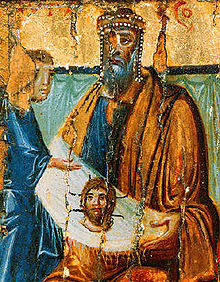 Much contemporary historical fiction is either too vulgar, too politicized, or too full of trite historical clap-trap for me to enjoy. So when I got this book, I began reading it with trepidation. Would this book fit into one of those molds? By the time I was finished, I was pleasantly surprised. Simply put, The Barbary Pirates is a light read, a page-turner, and a load of fun.
Much contemporary historical fiction is either too vulgar, too politicized, or too full of trite historical clap-trap for me to enjoy. So when I got this book, I began reading it with trepidation. Would this book fit into one of those molds? By the time I was finished, I was pleasantly surprised. Simply put, The Barbary Pirates is a light read, a page-turner, and a load of fun.The Barbary Pirates is the 4th book of the Ethan Gage series by William Dietrich. I haven't read the previous books, but the author does a decent job of explaining things so that the reader doesn't feel lost. As it is, the book stands as its own entity very well. It tells the tale of American adventurer Ethan Gage. Gage teams up with a trio of historical 'savants' -- naturalist Georges Curvier, inventor Robert Fulton, and geologist William Smith -- to find an ancient artifact of incredible power. The four must find it before the nefarious Egyptian Rite, a shadowy neo-pagan cabal which seeks to use the item to achieve their megalomaniacal aims.
If this plot sounds familiar, it's because it's been done before. Lots of times. Gage carries a long-rifle, but he may as well be wearing a hat and bullwhip. He is Indiana Jones 150 years earlier -- a lovable rogue who is constantly getting into scrapes with both his mortal enemies and with the fair sex.
That said, Dietrich has managed to breathe exciting new life into an old trope. While not particularly deep, The Barbary Pirates is action-packed and full of historical curiosities that span the ages from pre-history to Napoleonic times. The book has the virtue of not taking itself too seriously. As such, it is a much more entertaining and satisfying read than similar books like, for example, The Da Vinci Code.
For what it is, The Barbary Pirates is a good read. It may be the perfect book for beach-reading this summer. I will have to seek out some of the previous books in the series to supplement my own summer reading list.



